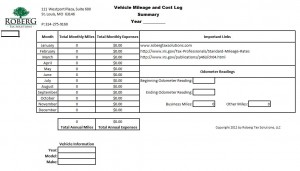I opened up my newspaper on Thursday morning and there it was on the front page, “New Tax Collector Hasn’t Paid Hers.” Once again, someone in charge of making us pay our taxes doesn’t see to paying her own. See link: http://www.stltoday.com/news/local/metro/st-louis-county-tax-collector-owes-personal-property-taxes/article_08e2dd2a-f9e2-59f4-b1e9-a7d99fe01ed6.html.
It’s not that difficult to check if someone has paid their property taxes in St. Louis County. You can check on real estate taxes here: http://revenue.stlouisco.com/ias/ and you can check on personal property taxes here: http://revenue.stlouisco.com/Collection/ppInfo/. Would it really be that difficult for the county officials who do the hiring to check these things? It’s really not rocket science. (And yes, you can go to that website and check which of your neighbors has or has not paid their taxes as well.)
But it’s not just here in St. Louis County, it’s all over. The example that still makes me angry after four years is Secretary of the Treasury, Tim Geithner. If you recall, he was appointed to his cabinet position despite the fact that he had “erroneously” failed to pay his Social Security and Medicare taxes on income he earned in 2001 and 2002. http://articles.businessinsider.com/2009-01-13/wall_street/30038796_1_imf-medicare-taxes-tax-audit
Now, I can actually understand that mistake, but he was audited for that same issue on his 2003 and 2004 tax returns, so it’s not like he didn’t know that he had done wrong here. Granted, he did pay the tax after Obama’s team vetted him for the position, but being realistic, I’m pretty sure those taxes would never have been paid had he not been trying for the Secretary of the Treasury job. If you want to be the Secretary of the Treasury—you should have paid all of your taxes before the president’s team asks you to.
It looks like Mr. Geithner will be leaving us soon and the Obama administration will need to appoint a new Secretary of the Treasury. Is it really asking too much to want someone at Treasury who obeys the same rules that the rest of us are required to obey? I don’t think so.
I’d like to see some type of rule that says a person running for public office needs to be in compliance with all their federal, state, and local tax laws before they’re even allowed to run for office. I’d have a lot more confidence in our elected and appointed officials handling our taxes if I knew they took care of their own first.









